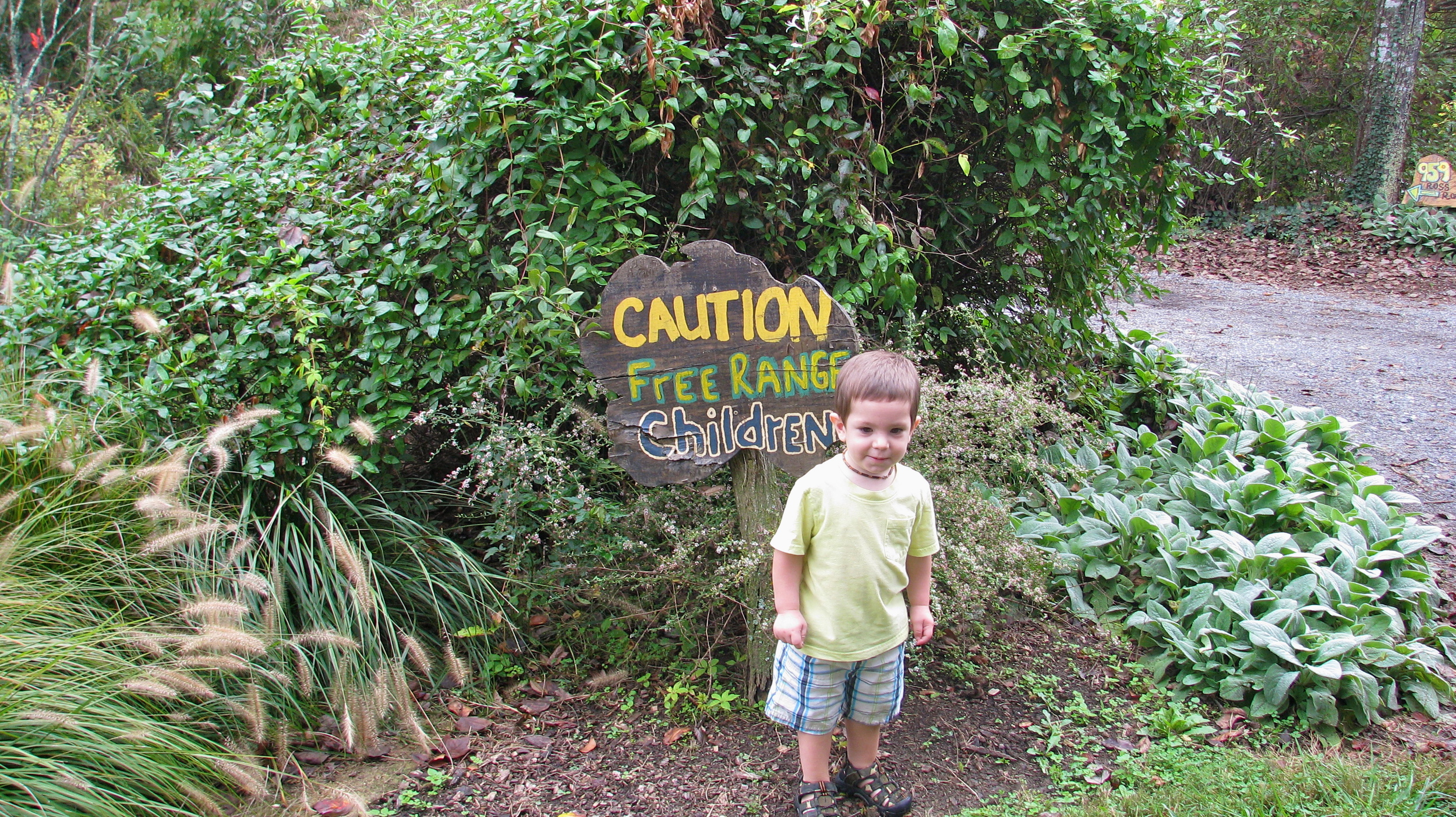Chicken and Children: My Thoughts on Free-Range
So what do chickens and children have in common, you ask? Well, simply put, I want to allow my egg-laying friends and boundary-pushing offspring the freedom to roam. That is the simple answer to that question. The complex answer involves:
- What freedoms do I give?
- At what ages are those freedoms given?
- How much do I assist?
- How much frustration do I allow?
- Where do I allow my children to roam about freely?
 Free-range parenting is actually quite a complex parenting philosophy. It goes well beyond the area of play in our household. The idea of free-range parenting involves A LOT of trust and respect on the shoulders of both parents and children. My children are two years old and seven months old. Their freedoms and boundaries may look very different than what you offer to your children, but the idea is the same. Other things that may cause variations besides ages are: the area in which you live, access to outside spaces, child safe zones in your house and your child’s physical ability.
Free-range parenting is actually quite a complex parenting philosophy. It goes well beyond the area of play in our household. The idea of free-range parenting involves A LOT of trust and respect on the shoulders of both parents and children. My children are two years old and seven months old. Their freedoms and boundaries may look very different than what you offer to your children, but the idea is the same. Other things that may cause variations besides ages are: the area in which you live, access to outside spaces, child safe zones in your house and your child’s physical ability.
Here is what free-range may involve in our house on any given day:
- allowing my 2 year old to play by himself in a designated area outside
- allowing my 7 month old a safe area in the floor with toys within reach, but not directly in his hands so that he discover the way his own body moves
- not helping my 2 year old cross the monkeybars at a playground before he is physically capable to accomplish this task on his own
- not placing my 7 month old in assisted sitting devices such as a Bumbo seat
- allowing my 2 year old to go out of my sight when in a safe outside area for short periods of time
- respecting as many “noes” as I can when safety is not an issue
- asking my children if they want my help before jumping in when they are frustrated with learning a new task
These are just a few scenarios where we try to allow our children freedom to discover their own personal capabilities, teach respect for boundaries and learn to trust.
Each of us has a small voice inside our heads that tells us if we are capable of accomplishing a task. Sometimes, we may be fearful of the task ahead or excited by it; but we are the only ones who can determine our capability to do the task. That little voice is the voice that we learn to trust. As an adult, I call this my instinct. If we, as parents, continually hover over our children, extinguish their “attempts” by telling them they can’t do something or even give them a false sense of security by helping them do a task that they are not physically ready for; then we suppress their ability to trust that instinct. Once we lose the connection with what we can and cannot accomplish, our performance declines and our built-in safety net disappears.
Now, I am like every other mother. I want to protect my children from all things harmful. I can guarantee if you do some of these things, your children will incur a few bumps and bruises. There will be some minor accidents. I feel as long as the risk is small and the bumps are minor, then the lesson learned is a valuable experience. This has been something that has taken time for me to become comfortable with. If I can build this trust early on, I will be able to trust my children's decision-making later on in life. They will also be more confident in to make their decisions! After all, who doesn’t want a confident child that you can trust?

